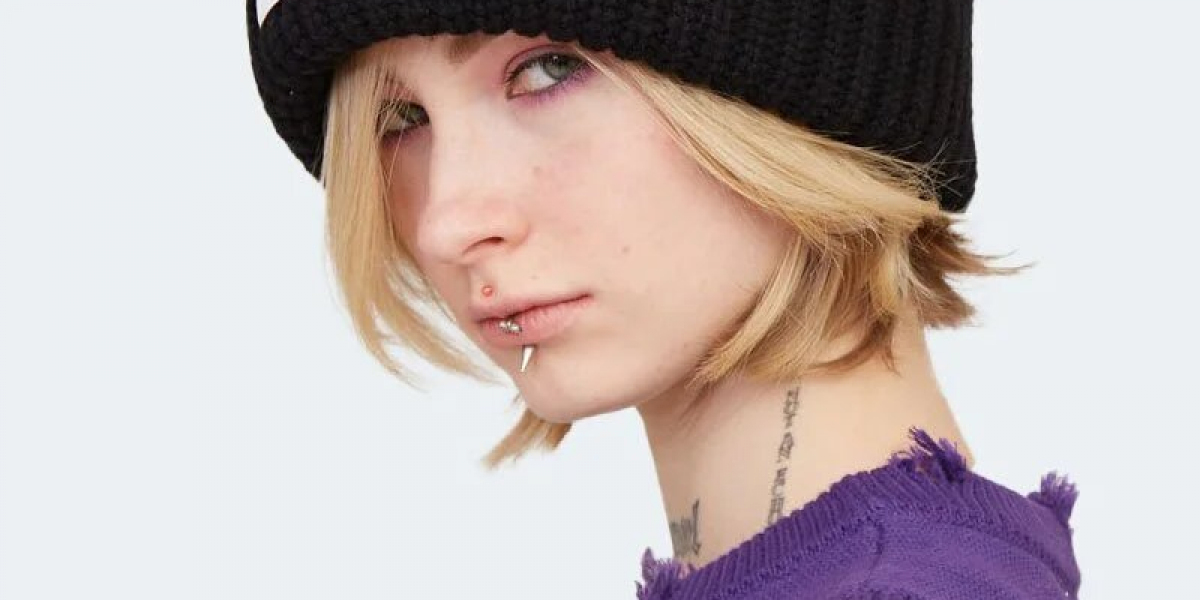Introduction: Beyond a Hat—A Cultural Phenomenon
Fashion, at its most powerful, becomes more than aesthetics—it becomes a form of self-expression, a rebellion, and a cultural landmark. The Loverboy hat, created by British designer Charles Jeffrey under his eponymous label "Charles Jeffrey LOVERBOY," is not just an accessory but a visual manifesto. Known for its whimsical, devil-horned design and gender-defiant energy, the Loverboy hat has transcended its initial runway debut to become a global symbol of individuality, queerness, and avant-garde fashion.
What makes this headpiece so magnetic is not just its visual boldness but what it represents—a generation that refuses to conform. Let’s delve deep into the design, cultural context, artistic symbolism, and the lasting influence of the Loverboy hat.
The Origins: Charles Jeffrey and the Birth of LOVERBOY
To understand the Loverboy hat, one must understand the visionary behind it. Charles Jeffrey is a Scottish-born fashion designer who rose to prominence in the mid-2010s as a Central Saint Martins graduate. His label, LOVERBOY, started as a club night in London, born out of a desire to create inclusive, queer spaces for fashion and art. It was an incubator for creativity, where experimental clothing and performance art collided under strobe lights and loud beats.
The hat debuted during one of his early runway shows and quickly became the label’s emblem. What began as a playful costume piece—part punk, part fantasy, part devil-may-care—grew into a fashion icon. With its vibrant colors, plush texture, and unmistakable horns, the hat offered something many lacked: a bold, unapologetic identity.
Design Elements: The Anatomy of the Loverboy Hat
At first glance, the Loverboy hat might seem like a novelty item. But each component is carefully thought out to represent rebellion and joy:
- Horns: The iconic twin horns protruding from the cap suggest mischievousness and defiance. Drawing from mythology, queer culture, and punk aesthetics, these horns flip the script on traditional representations of “good” and “evil.” In Loverboy’s world, being different isn’t deviant—it’s divine.
- Material: Often made with fuzzy wool or soft felt, the hat provides both comfort and bold texture. The tactile nature gives it a plush, almost childlike quality, contrasting with its rebellious shape.
- Color Palette: From neon pinks to deep blacks, the Loverboy hat comes in an array of colors. Each hue carries its own story—red for passion, blue for calm defiance, black for classic punk.
The hat is whimsical yet provocative, wearable yet artistic. It exists in a space where fashion becomes costume, and costume becomes personal empowerment.
Cultural Impact: A Queer Fashion Statement
The Loverboy hat has become synonymous with queer fashion—not only because of its creator's identity but also because of its symbolic language. Fashion has always played a vital role in queer visibility, and the Loverboy hat, with its fantastical horns and flamboyant presence, carves out space for identities that traditional fashion often sidelines.
Wearing the hat is a form of political and personal expression. It’s a rejection of binary thinking, an embrace of theatricality, and a celebration of camp. Like the work of Leigh Bowery, Vivienne Westwood, or early Alexander McQueen, Charles Jeffrey’s designs—including the hat—carry emotional and cultural weight.
The hat has been spotted on nonbinary artists, queer performers, and fashion-forward celebrities who use it as a canvas to tell their own stories. It challenges the homogeneity of mainstream style and proudly flies the flag for alternative beauty.
Celebrity Endorsements and Pop Culture Penetration
Fashion items often gain traction through celebrity endorsements, but the Loverboy hat has enjoyed a more organic rise. It’s not just about being worn—it’s about being felt. Artists like Harry Styles, Olly Alexander, and Ezra Miller have embraced the hat, not merely as an accessory but as a mood, a performance piece.
Its presence in photo shoots, fashion editorials, and red carpet events signals more than trendiness—it announces authenticity. The hat appears in places where narrative-driven fashion is celebrated. Each sighting tells a story, whether of gender fluidity, artistic independence, or the resurgence of DIY culture in high fashion.
The hat has also found its way into the music scene, visual art projects, and even drag culture, cementing its place as a modern queer relic.
Fashion vs. Costume: The Theatrical Line It Walks
One of the most intriguing aspects of the Loverboy hat is how it blurs the line between fashion and costume. For some, it’s too theatrical to be wearable; for others, that theatricality is precisely what makes it essential.
In the era of normcore and minimalist aesthetics, the Loverboy hat stands out as a reminder that fashion can be loud, expressive, and downright strange. It encourages people to play with identity, to costume themselves not just for Halloween or the runway, but for life.
That performative edge also echoes the roots of queer nightlife, where dressing up was both a means of survival and a form of celebration. The hat channels that energy, acting as both armor and spectacle.
The Rise of Queer Streetwear: Where the Loverboy Hat Fits In
Streetwear has become the fashion lingua franca of the 21st century, but until recently, it largely excluded queer narratives. Enter Charles Jeffrey LOVERBOY. The brand, and by extension the hat, brings queerness into the streetwear dialogue—not by assimilating, but by asserting its own codes.
In this space, the Loverboy hat serves as a badge of belonging, much like a band tee or skate shoe might in other subcultures. It’s the crown of the queer streetwear kingdom—a symbol not only of inclusion but of joyful defiance.
Artistry and Craftsmanship: Handmade Identity
Many editions of the Loverboy hat are handmade or involve artisanal detailing, setting it apart from mass-produced accessories. This gives each hat a unique quality, infusing it with the spirit of its creator and wearer.
It’s no accident that the hat feels personal. Charles Jeffrey often collaborates with craftspeople, performance artists, and fellow designers to keep the soul of the object intact. The result is a piece that’s both fashion and folk art.
In an industry increasingly driven by digital production, the Loverboy hat stands as a tactile, textured testimony to the power of handmade, intention-driven design.
Global Influence: From London to Tokyo
Though born in London, the Loverboy hat has captivated global audiences. Its reach extends from the underground clubs of Berlin to the Harajuku streets of Tokyo. In each context, the hat takes on new meanings—sometimes punk, sometimes pop, always personal.
This global resonance proves that the hat isn’t just a local London artifact but a universal statement of youth culture and queer expression. It’s been adapted, imitated, and reimagined, yet always retains its core identity: radical, playful, and proud.
Why People Love It: Identity, Community, and Joy
So, why has the Loverboy hat endured and thrived when so many fashion gimmicks fade away? The answer lies in the emotional and cultural terrain it touches:
- Identity: For many, wearing the hat is about embracing a version of themselves that society tells them to suppress. It's about reclaiming visibility and pride.
- Community: The hat often sparks conversation and connection. Spotting someone else wearing one creates an instant bond—a silent acknowledgment of shared values and aesthetics.
- Joy: Above all, the Loverboy hat is fun. Its design, colors, and textures invoke joy—a radical emotion in a world that often punishes difference.
Criticism and Counterculture: Is It Just a Trend?
Like all iconic fashion pieces, the Loverboy hat has its critics. Some argue it’s become too trendy, commodified to the point of losing its rebellious edge. There are concerns about authenticity—when a symbol of queer defiance becomes a commodity, does it lose its soul?
These questions are valid. But it’s also true that symbols evolve. If anything, the hat’s popularity has opened doors for conversations around identity, creativity, and inclusivity. It continues to provoke, even when it’s mass-adopted. That, in itself, is a kind of resistance.
Conclusion: The Future of the Loverboy Hat
The Loverboy hat is more than a fashion item—it’s a cultural object, rich with meaning and memory. As fashion continues to evolve, and as queer stories continue to fight for space in mainstream narratives, the hat stands tall (and horned) as a beacon.
Whether you see it as a fashion statement, an art piece, or a political act, one thing is certain: the Loverboy hat is here to stay. It doesn’t just sit on your head—it sits at the intersection of art, identity, and rebellion. And in that space, it will continue to inspire generations to come.


